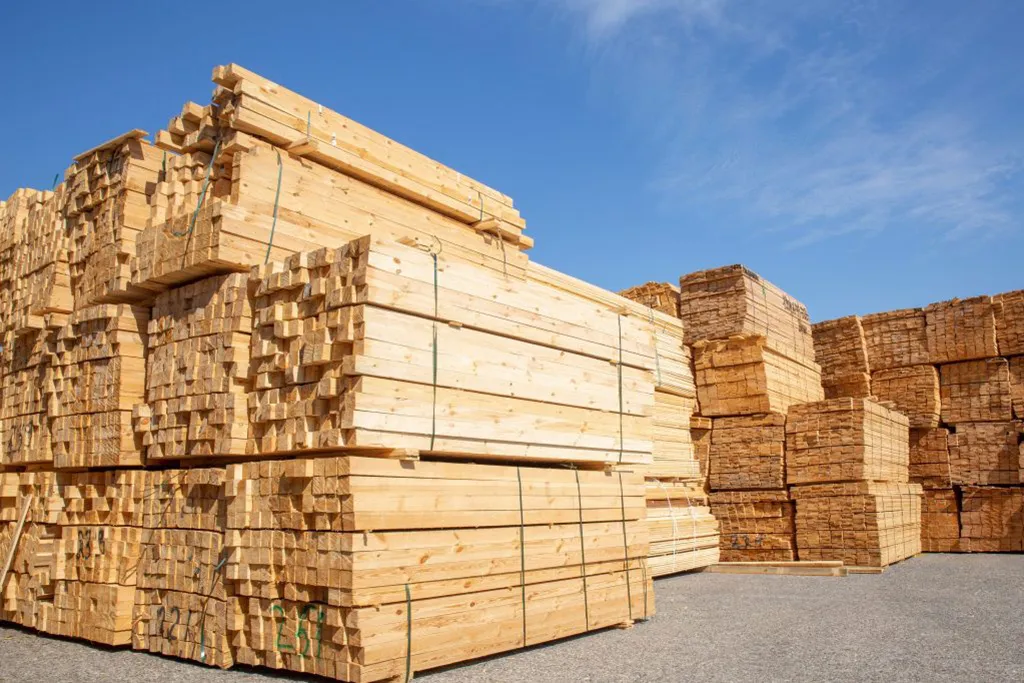In the heart of the global timber trade, a silent crisis is unfolding. A recent study published in *Regional Sustainability* sheds light on the complexities and challenges of ensuring sustainability in the tropical timber trade, with significant implications for the agriculture sector. The research, led by Mandira Pokharel from the State University of New York, delves into the intricacies of trade documentation and conservation prioritization, offering insights that could reshape the future of timber imports.
The study focuses on four tropical timber species—Keruing, Meranti, Acajou d’Afrique, and Mahogany—imported into the United States from countries like Indonesia, Malaysia, Brazil, and Cameroon. These species are not only valuable commodities but also face high rates of illegal logging, making accurate identification and documentation crucial for sustainable trade.
One of the key findings is that despite the mandatory declaration of scientific names under the Lacey Act Amendment (LAA) of 2008, approximately 14.60% of timber import records lacked species-specific names. This gap in documentation hampers efforts to track and regulate the trade effectively. “Inaccurate species identification leads to unreliable trade statistics and enforcement challenges,” explains Pokharel. “This not only undermines conservation efforts but also creates commercial uncertainties for businesses involved in the timber trade.”
The study identified a staggering diversity within these timber groups: 49 species of Keruing, 126 species of Meranti, 6 species of Acajou d’Afrique, and 2 species of Mahogany were imported during 2017–2023. Among these, 37 species of Keruing and 68 species of Meranti are listed as threatened by the International Union for Conservation of Nature (IUCN) but are not included in the Convention on International Trade in Endangered Species of Wild Fauna and Flora (CITES). This discrepancy highlights a critical gap in global conservation efforts.
To address these challenges, the researchers developed the Trade-Adjusted Conservation Priority Index (TACPI), which integrates conservation status with trade prominence. This index helps prioritize species at risk, such as Dipterocarpus coriaceus and Shorea balangeran, which urgently need regulatory focus. “The TACPI provides a comprehensive framework to identify species that require immediate attention,” says Pokharel. “This tool can guide policymakers and industry stakeholders in making informed decisions that balance commercial interests with conservation priorities.”
The study also employed principal component analysis (PCA) to understand the drivers of timber trade. The first principal component was primarily driven by import value and volume, reflecting the overall trade prominence, while the second component captured temporal patterns through import year. This analysis underscores the importance of monitoring trade dynamics to ensure sustainable practices.
The commercial implications of this research are significant. For the agriculture sector, which often relies on timber for various applications, ensuring the sustainability of timber imports is crucial. Accurate identification and documentation can help businesses avoid legal pitfalls and reputational risks associated with illegal logging. Moreover, the TACPI can serve as a valuable tool for companies to prioritize the use of sustainably sourced timber, thereby enhancing their environmental credentials and meeting consumer demands for eco-friendly products.
As the global community grapples with the challenges of deforestation and illegal logging, this research offers a roadmap for more effective regulation and conservation. By enforcing the LAA more strictly, expanding timber identification technologies, and mandating key supplier countries to list high-risk species in the CITES appendices, the timber trade can move towards greater sustainability. “This study is a call to action for all stakeholders involved in the timber trade,” Pokharel emphasizes. “Collaborative efforts are essential to ensure that our commercial activities do not come at the cost of our planet’s biodiversity.”
In conclusion, the findings of this study published in *Regional Sustainability* by Mandira Pokharel from the State University of New York provide a compelling case for improved trade documentation and conservation prioritization in the tropical timber trade. By addressing the gaps in species identification and leveraging tools like the TACPI, the agriculture sector can contribute to a more sustainable and responsible future for timber imports.

